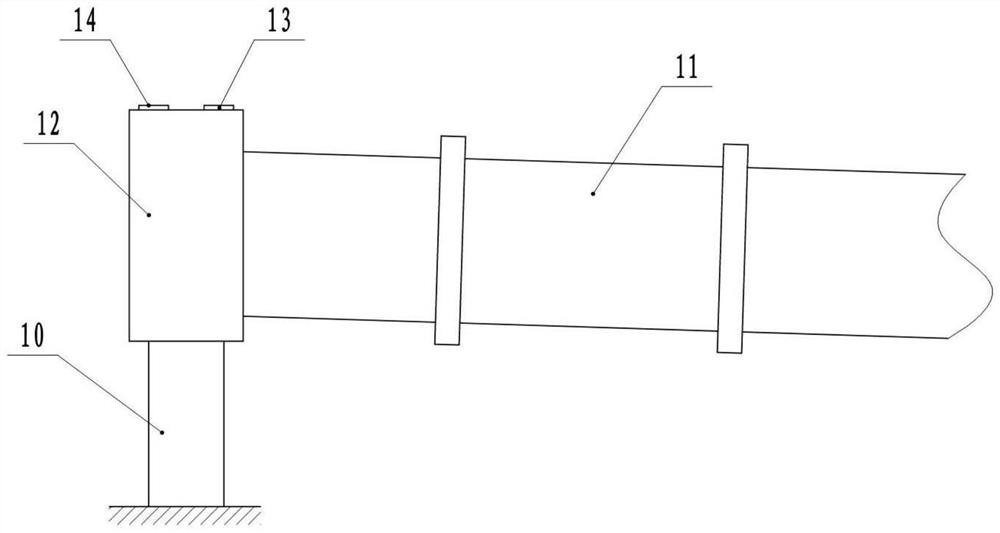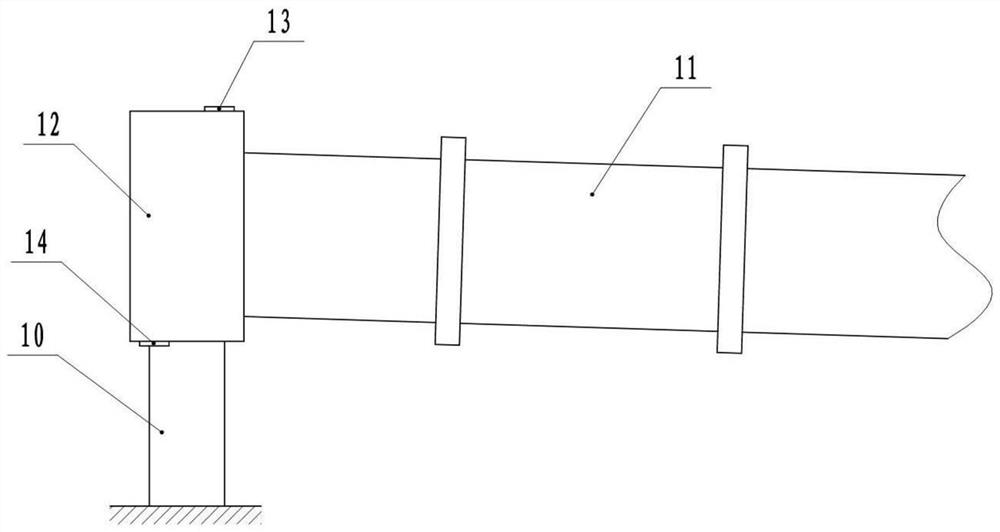Hazardous waste incineration rotary kiln air supply structure
A rotary kiln and air supply technology, which is applied in the direction of incinerator, combustion type, combustion method, etc., can solve the problems of heat loss, increase of moving speed thermal loss rate, high air excess coefficient of rotary kiln, etc., to achieve low thermal loss rate, The effect of reducing heat loss
- Summary
- Abstract
- Description
- Claims
- Application Information
AI Technical Summary
Problems solved by technology
Method used
Image
Examples
Embodiment 1
[0030] Basic as attached figure 1 Shown: the air supply structure of a rotary kiln for hazardous waste incineration, including a support frame 10, a rotary drum 11 and a kiln head cover 12, wherein the rotary drum 11 is rotatably connected to the support frame 10, and the kiln head cover 12 is fixed on the support frame 10. The drum 11 and the kiln head cover 12 are connected in a rotary seal, the drum 11 is installed at an inclination, and the end of the drum 11 close to the kiln head cover 12 is higher than the other end.
[0031] The kiln head cover 12 includes a cylindrical outer wall and end covers connected to the two ends of the outer wall. The outer wall of the kiln head cover 12 is provided with a main air hole 13 and a secondary air hole 14, wherein the main air hole 13 is located at the top of the outer wall, and the main air hole 13 is located at the top of the outer wall. Both the air hole 13 and the auxiliary air hole 14 are circular holes, the aperture of the ma...
Embodiment 2
[0035] The difference from Example 1 is that in this example, D=1.5d; through model simulation calculation, a conclusion similar to that of Example 1 is obtained, that is, the air excess coefficient of hazardous waste incineration is controlled between 0.8 and 1.0 to control the air The feed rate of hazardous waste incineration in the rotary kiln is less than 3%.
Embodiment 3
[0037] combine figure 2 As shown, the difference from Embodiment 1 is that in this embodiment, the auxiliary air hole 14 is located in the middle of the outer wall; through model simulation calculations, a conclusion similar to that of Embodiment 1 is obtained, that is, the air excess coefficient of hazardous waste incineration is controlled at 0.8 ~1.0 to control the air supply, and the thermal loss rate of hazardous waste incineration of the rotary kiln is less than 3%.
PUM
 Login to View More
Login to View More Abstract
Description
Claims
Application Information
 Login to View More
Login to View More - R&D
- Intellectual Property
- Life Sciences
- Materials
- Tech Scout
- Unparalleled Data Quality
- Higher Quality Content
- 60% Fewer Hallucinations
Browse by: Latest US Patents, China's latest patents, Technical Efficacy Thesaurus, Application Domain, Technology Topic, Popular Technical Reports.
© 2025 PatSnap. All rights reserved.Legal|Privacy policy|Modern Slavery Act Transparency Statement|Sitemap|About US| Contact US: help@patsnap.com



